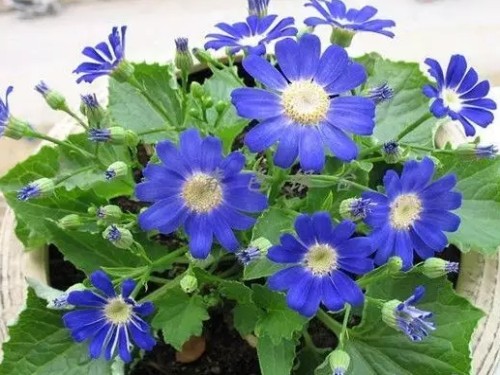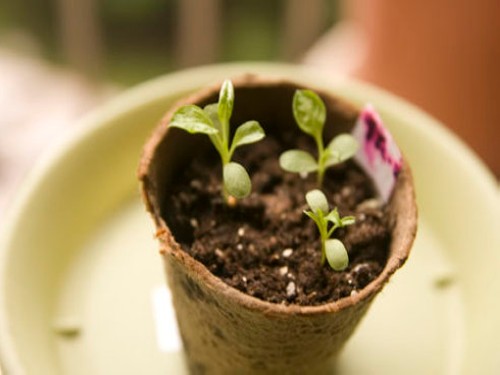Culture method of garlic vine
Garlic vines, named for the smell of garlic when flowers, leaves and branches are damaged, are often used as flower corridors. When they bloom, they blossom with silver bell-like flowers. When the wind blows, they don't ring, but they smell garlic. And garlic vines are like apricot flowers, the flowers are red at first, then fade gradually, and become snow-white when they fall.
Garlic rattan is strong by nature and is generally used as a fence, fence beautification or pavilion, scaffolding decoration. Another feature of this flower is that it can change color over time. The flowers are pink and purple when they bloom, then turn pink a few days later, and finally turn white and fall. Sex likes warm and humid climate and sunny environment, the suitable temperature for growth is 18-28 ℃, the requirement of soil quality is not high, and the environment of full sunshine is the best. When the winter temperature is lower than 5 ℃ for a short time, the subtropical area can survive the winter safely except for some fallen leaves, and if the temperature is below 5 ℃ for a long time, it can cause freezing injury to the aboveground part, which needs full-day cultivation.

1. Soil
It has no requirements for soil quality, potted plants, ground plants, climbing vine growth, of course, we need to pull its growth, every spring after flowering for pruning. Flower friends in the north can be potted, and the soil can be mixed with garden soil, sawdust and peat soil at 1:1:1: 1, as cultivation soil.
2. Lighting
Garlic vine likes light, we can put it in a place with enough light, but it is a pity that it is not cold-resistant, and the cold wind will affect its growth. It is best planted in sunny leeward, loose, fertile slightly acidic sandy soil. Be sure to plant it in a place with plenty of light, otherwise it will blossom sparsely or not, and the environment of full sunshine is the best.
3. Temperature
Like the warm climate, the water and fertilizer should be sufficient in the growing season, and the suitable temperature for growth is 18-35 ℃. Some leaves will fall when the winter temperature is lower than 5 ℃, but it can also survive the winter safely.
4. Watering
Like moist, afraid of waterlogging, slightly resistant to drought. The soil can be kept moist in spring, and the watering times and quantity can be gradually increased with the increase of air temperature, basically once every 3-5 days, with slightly moist no stagnant water is better, high temperature in summer can be watered once a day, autumn basically keeps the same amount of water as in spring, but it should be reduced with the decrease of air temperature, winter plant dormancy should be controlled by water, it can be watered once every half a month or so, keep slightly dry, pay attention to water control and drainage in cloudy and rainy days.
5. Fertilization
Like fertilizer, it is necessary to apply enough organic fertilizer as base fertilizer at the bottom of the pot before transplanting, increase compound fertilizer appropriately in spring growing season, partially apply phosphorus and potassium fertilizer after budding, do not apply fertilizer after flowering, apply a small amount of fertilizer for many times, and do not apply too much nitrogen fertilizer, otherwise the branches and leaves will flourish and will not bloom.
6. Change the basin
Flowering plants can be changed every spring after the weather warms up, retaining protective soil as far as possible, pruning branches and aging roots, applying sufficient organic fertilizer at the bottom of the basin, watering enough fixed root water after planting, shading treatment, keeping the basin soil moist without stagnant water, normal management after slow seedling.
7. Disease
There is often leaf spot, which can be controlled by Pythium oligosaccharides, aminooligosaccharins and Trichoderma harzianum. Spray has been wet leaves do not drip water is better, root irrigation should be thoroughly, and it is best to prevent and cure with different drugs.
Key points of maintenance:
1. Garlic vines like warm, humid climate and sunny environment.
2. Like loose, fertile slightly acidic sandy loam.
3. Water once a day in summer and once every 3-4 days in winter.
Time: 2019-06-01 Click:
- Prev

Culture methods of potted Chrysanthemum morifolium
Chrysanthemum morifolium is native to the Canary Islands in the Atlantic Ocean and is now widely cultivated in parks or courtyards all over China. Beautiful and colorful flowers and colors, it is a common bonsai flower and ornamental plant decorating the courtyard room. Recently, I saw that many flower friends have bought melon and leaf chrysanthemum. I don't know what to do.
- Next

Culture methods of bluebells
Bluebells are often planted on the edge of flower beds, courtyards or gardens. Their unique flowers, bright and clean, pure and elegant, are in full bloom, especially beautiful, making people feel cheerful and happy. Campanula is a lovely and elegant flower, and potted plants can play a different role in dressing up indoors. That's for sure
Related
- Fuxing push coffee new agricultural production and marketing class: lack of small-scale processing plants
- Jujube rice field leisure farm deep ploughing Yilan for five years to create a space for organic food and play
- Nongyu Farm-A trial of organic papaya for brave women with advanced technology
- Four points for attention in the prevention and control of diseases and insect pests of edible fungi
- How to add nutrient solution to Edible Fungi
- Is there any good way to control edible fungus mites?
- Open Inoculation Technology of Edible Fungi
- Is there any clever way to use fertilizer for edible fungus in winter?
- What agents are used to kill the pathogens of edible fungi in the mushroom shed?
- Rapid drying of Edible Fungi

